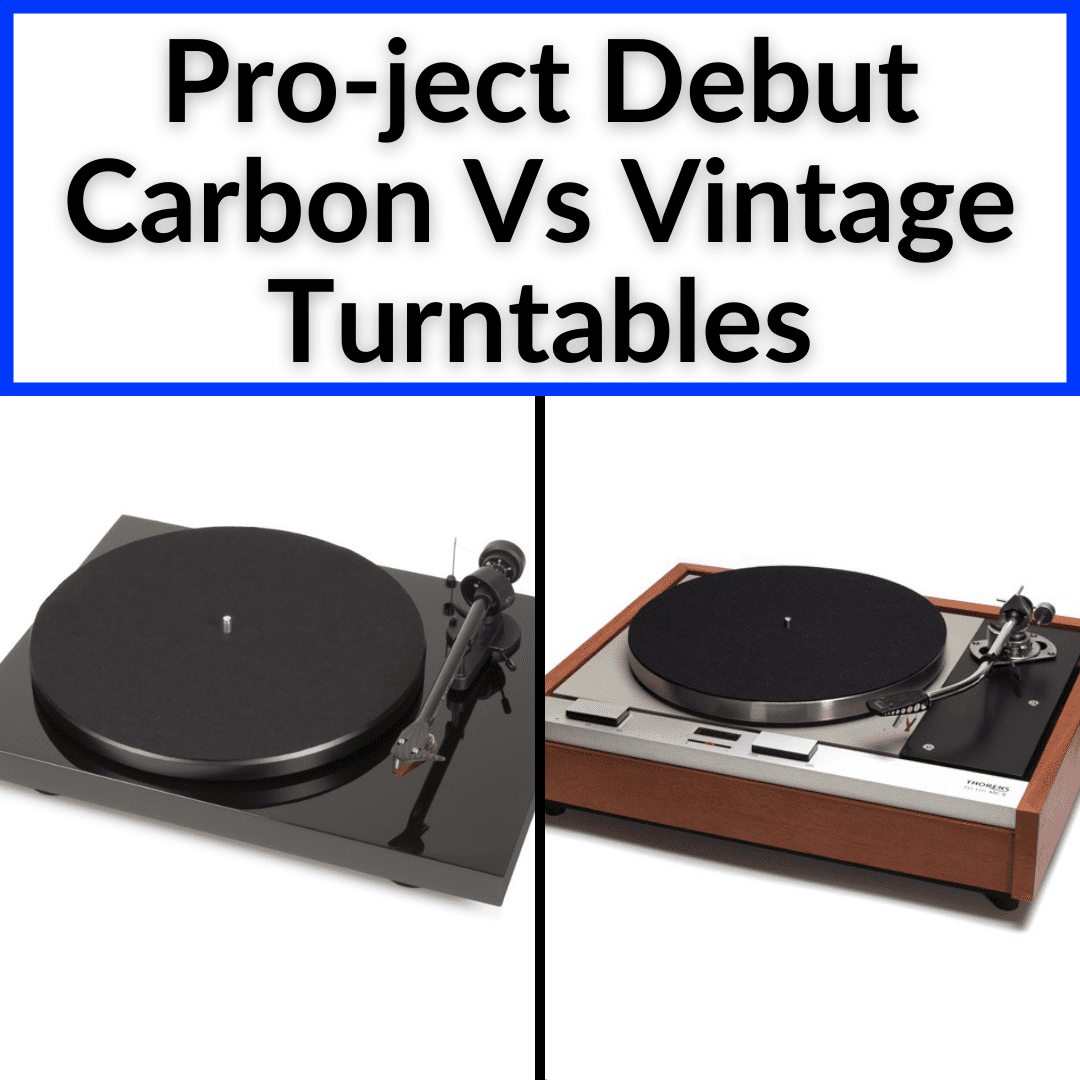
And the truth is: there are very few similarities, even when you dig deeper.
But a lot of people end up trying to decide between the two.
And that’s for one good reason, The one major thing they do have in common.
Excellent sound quality.
But even then, the type of sound, and what it takes to get there, are quite different.
Keep reading for our in depth comparison of the Pro-ject Debut Carbon vs vintage turntables. If you’re trying to decide between the two, you should be able to make up your mind by the time you get to the end.
Contents
- 1 Pro-ject Debut Carbon Vs Vintage Turntables
- 1.1 What Is The Pro-ject Debut Carbon?
- 1.2 What is A Vintage Turntable?
- 1.3 Differences Between The Project DC And Vintage Record Players
- 1.4 Similarities Between Vintage Turntables And The Debut Carbon
- 1.5 Advantages Of The Pro-Ject Debut Carbon
- 1.6 Advantages Of Vintage Turntables
- 1.7 Why Get A Project-Debut Carbon
- 1.8 Why To Get A Vintage Turntable
- 2 Pro-ject DC Vs Vintage: Final Thoughts
Pro-ject Debut Carbon Vs Vintage Turntables
We’ll begin this comparison by looking at both individually, before comparing and contrasting them and diving into the advantages of each. We’ll finish by helping you decide which option is best for you.
What Is The Pro-ject Debut Carbon?
- Lightweight yet very sturdy and stable
- Extremely high-quality components for exceptional sound
- Very low price given the quality
- Available in multiple colors
- Consistent speed and reduces almost all vibrations and unwanted resonances
- Comes with 2-year manufacturer’s warranty
- No Bluetooth connectivity
- No USB port
- No headphone jack
The Pro-Ject Debut Carbon is a belt-drive, 2-speed audiophile-focused midrange minimalist turntable that competes with similar models like the U-Turn Orbit.
It has an extremely minimalist design and aesthetic with no extra switches or buttons or lights to be seen. It has no switch to change speeds, no power switch is visible, and it is fully manual.
By fully manual I mean actually fully manual. You have to move the belt yourself to change speeds, you have to move the tonearm yourself when the record is over, etc. There are no automatic functions here.
It is a great-sounding turntable, and it comes with the Ortofon 2M Red cartridge, which costs a hundred bucks on its own.
There are some design specifics on this unit that I am not crazy about, but I can not deny how good it sounds for this price point.
I would have liked a speed switch or a dust light like the Audio Technica models have in this range. But the Pro-ject DC is fully minimalist. If you like that, you will love this one.
What is A Vintage Turntable?
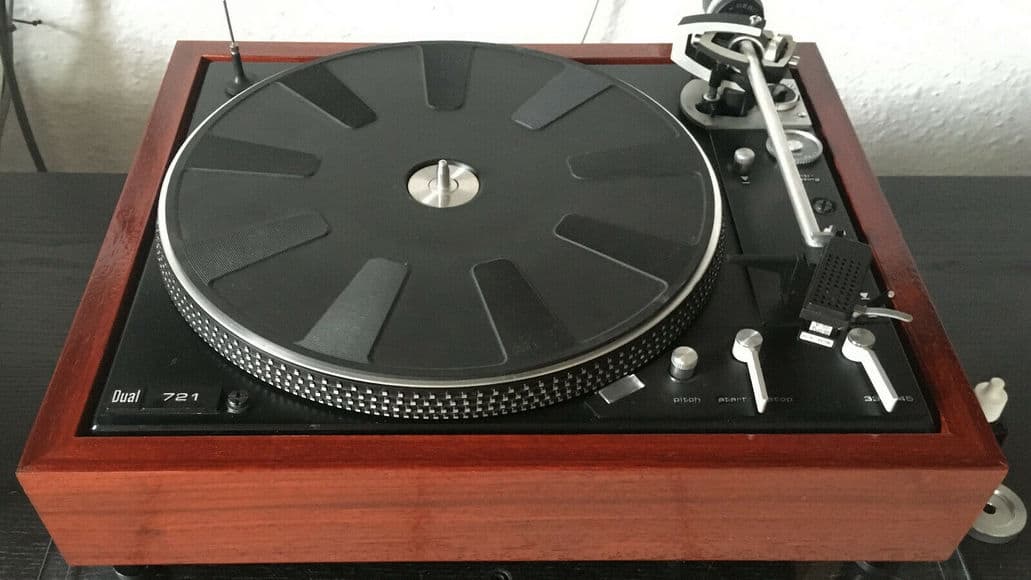
Technically, vintage means anything that is over 20 years old. By this definition, something that was made in 2000 is now vintage.
Seeing this typed out with my own eyes is freaky. How is the year 2000 vintage now?
My oldness aside, there is a huge market for vintage turntables, because they just never break and have amazing sound due to the slower manufacturing process they had back in the day.
Keep in mind, when somebody says vintage regarding turntables, they are not talking about the year 2000, despite the definition above. They usually mean the 1970s to early 1990s.
Here are some of the most desirable vintage decks:
- Technics SL series (SL1200, SL1700)
- Yamaha YP series (YP-701)
- Any VPI
- The Thorens TD-125
- Dual 701
When talking about vintage turntables with random people, they are probably thinking of these.
Differences Between The Project DC And Vintage Record Players
Let’s take a closer look at the major differences between vintage record players and the modern Pro-ject Debut Carbon.
Looks
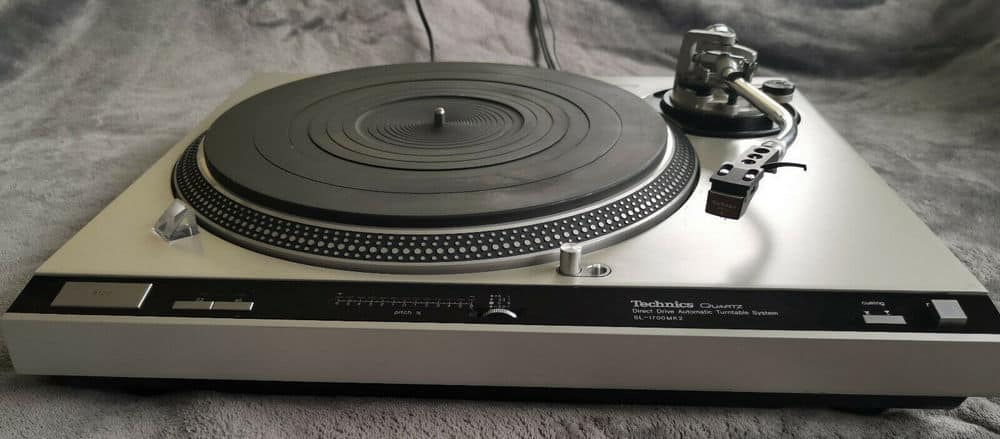
Vintage turntables look nothing like the Pro-Ject Debut. Vintage units will have switches and buttons and lights, where the Pro-Ject Debut looks like a plank of wood with a circle on it.
The DC also comes in multiple colors. Basically, there are no similarities in the look and feel between vintage units and the Pro-Ject Debut.
Mounts
Many vintage units used to come suspended inside a wooden box, with springs or shocks attaching the actual unit to the frame. This was done to minimize the vibrations reaching the platter from the surrounding area.
You won’t see any of that with the Project Debut Carbon It would be too expensive, and their engineers probably see it as unnecessary.
Platter
Vintage platters are almost always brushed aluminum, which was the thing back in the day. The shinier on the edge of the platter, the better.
Thin aluminum is a good material for a platter because it is lightweight and does not carry too many vibrations. In comparison the platter on the Pro-Ject Debut is plastic.
Weight
The old vintage turntables are heavy. They are made of real wood, solid metal, and very little plastic. Even the plastic looks like metal on these things.
The Pro-Ject Carbon Debut goes out of its way to avoid having visibly metal parts, but the vintage ones show it off! That said, the Debut still weighs just over 17 pounds, which is heavy in comparison to some other minimalist units.
Speeds
The vintage units almost all have 78 as a speed option. You won’t find that on the Pro-Ject or almost any other modern-style turntables. It is an outdated format that is no longer used in production.
Similarities Between Vintage Turntables And The Debut Carbon
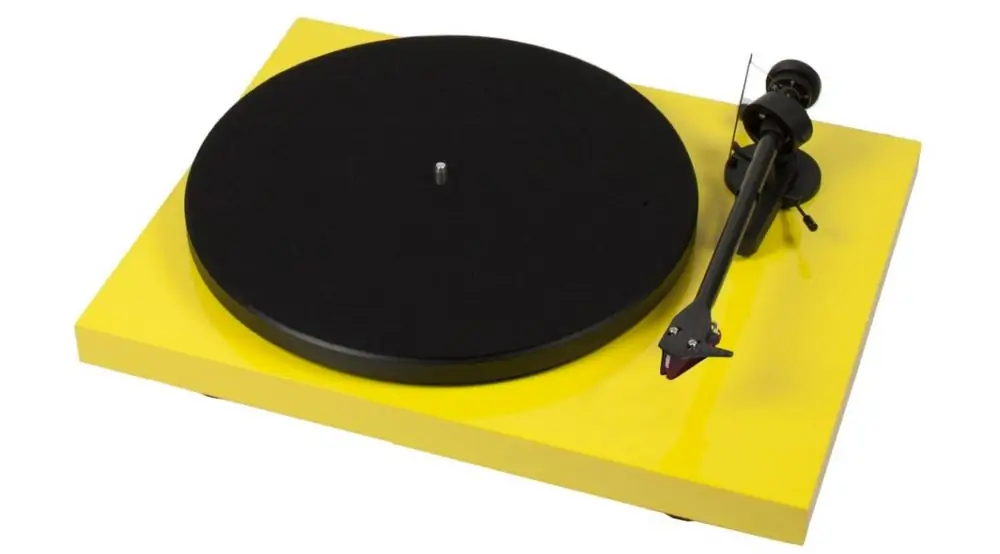
The biggest similarity is quality. Both vintage turntables and the Pro-Ject DC will give you excellent sound. Of course, there are a lot of nuances here.
Some vintage models sound like trash unless they are modified or upgraded. But once they are, there is no modern turntable that can touch the sonic quality.
It is hard to say that all vintage turntables sound as good as the Debut because that would be silly. However, most of the units on my list, when properly set up and upgraded with a great cartridge, will sound as good or better.
But they may have a little more extra noise. The Pro-Ject Debut is extremely quiet.
Advantages Of The Pro-Ject Debut Carbon
Now let’s go over the big advantages of the Pro-ject DC over vintage turntables.
Lightweight
The Pro-Ject Debut Carbon is lighter in weight. It is still fairly heavy compared to some other modern turntables, but it is lighter than most of the old beast vintage models. Lighter is better when you are carrying it from place to place.
Simplicity
The DC is much simpler as far as parts and mechanics. There is not much going on under the hood with these. It has a motor, some audio circuitry, a cart, and the other basic trimmings, but nothing extra.
This means there is much less to go wrong, with fewer moving parts. And it is easier to fix, if it should ever need repairs.
On the other hand, the vintage models often have secondary motors, many switches, lights, levers, convoluted counterweights, attached RCA cables that always suck, and more fun stuff.
If you have to repair one of these (which you always do before you can use it) it will cost as much as a new Pro-Ject Debut, just for the repairs.
Quiet Operation
It is an extremely quiet machine. In contrast, some of the vintage units have audible sounds during operation and most have some small, if the nearly inaudible, level of hiss or hum on playback. But a well set up vintage model will be nearly silent, too.
Advantages Of Vintage Turntables
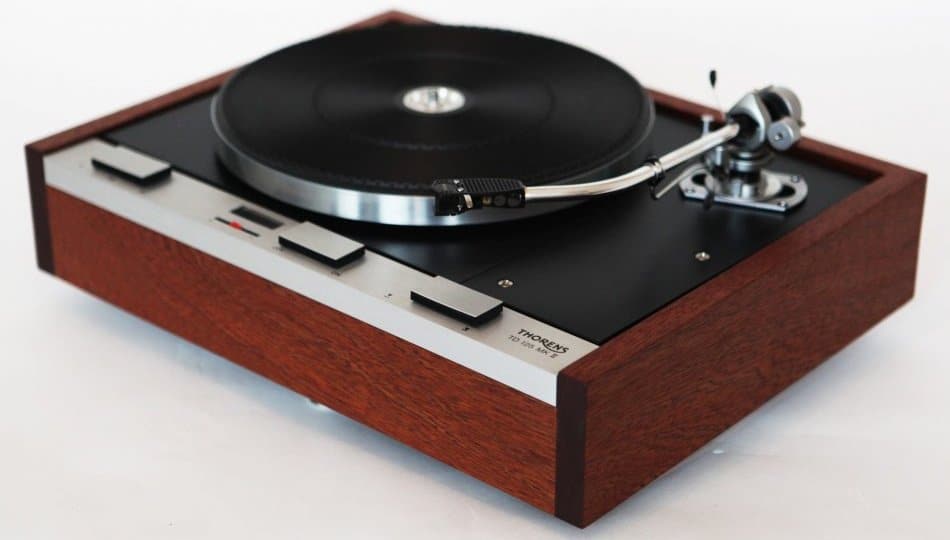
The following are the biggest advantages of vintage style record players.
Appearance
This is obviously subjective, but I think vintage turntables have a much more interesting look. I like the look and feel, the switches and shiny metal and real wood.
Of course, I grew up with this stuff so there is the nostalgia element for me. Many of the people restoring and buying these are old people reliving their teen years. Younger people might prefer the sleek, modern look of the DC.
Sound
This is not to say they sound better. It’s that there is a certain tone that a good old vintage unit can produce that you will not be able to get with a Pro-Ject Debut.
Don’t get me wrong, the Debut sounds incredible, but there is a sonic character to vintage record players that is hard to describe. I think you could call it a kind of warmth. It is something you you only can get from a vintage turntable and it is lacking in modern units like the Debut Carbon.
Initial Price
I say initial, because you can pick these up for between a hundred and three hundred bucks usually. However, that is the initial price.
It does not include the inevitable new cartridge (100 bucks) new belt (25) possible new motor (50-150) lights (20) feet (50) dust cover (50 if you can find one). And of course, the actual repairs that will be needed which will always cost at least 200 bucks.
So, you can get a vintage one cheaper, but to get it playable you will pay a couple hundred more than you will for a Debut.
Why Get A Project-Debut Carbon
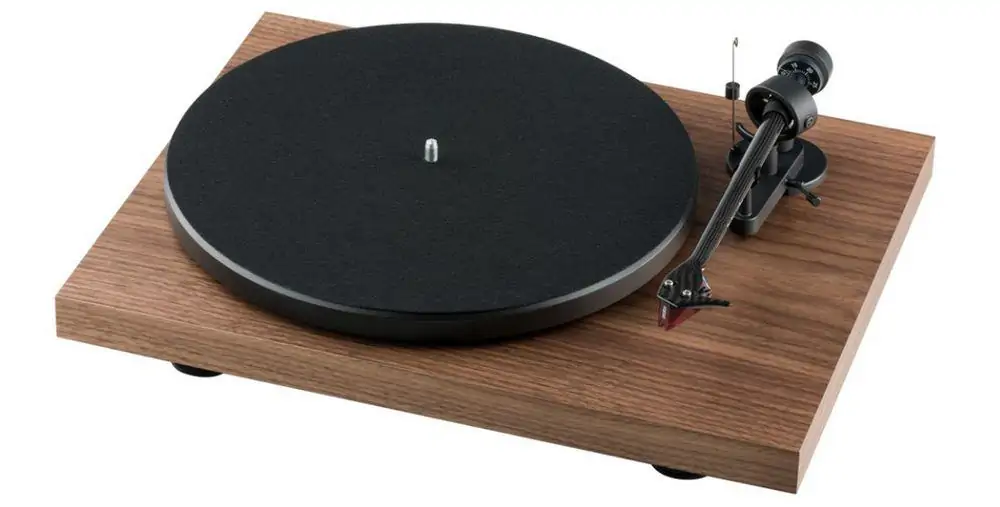
If you like the look and feel and want a great-sounding minimalist turntable, and do not mind some extra work to operate it, this is for you.
It will cost you less than vintage in the long run and it comes with an excellent Ortofon red cartridge. What is not to love?
If you know you want a modern minimalist record player, but are not sure the DC is right, read our comparison of the U-Turn Orbit vs Debut Carbon. The Orbit is very similar, but a bit cheaper and a good alternative to the DC.
Why To Get A Vintage Turntable
If you don’t mind repairing old stuff, or paying for old stuff to be repaired, and you want that warm sonic character and vibe of a vintage turntable, get one!
They are very rewarding once you have them up and running, and an argument could be made that a well-tuned vintage unit like a Technics SL1700 will sound better than any modern turntable.
Is it true? Hard to say since all ears are different.
Pro-ject DC Vs Vintage: Final Thoughts
The main point to take from this comparison is that both options are excellent. Which one is best for you depends entirely on your tastes and what you want.
If you prefer modern, simple and minimalist, go with the Pro-Ject DC. If you prefer the vintage look and the classic, warm vintage sound, go with a vintage turntable. Whichever one you choose, you’ll enjoy great sound quality, and that’s really what matters the most!

The platter on the pro-ject is not plastic
Correct, Calvin! But the guy writing for this website doesn’t let such facts get in the way.
A heavier platter is far better than a lighter one because it Naturally irons out vibration and “flutter ” which can detract from the sound.
Exactly, and the turntable for the Debut is heavy and even upgradable.
One should be required to actually know something about the subject matter before publishing it. This is one of the poorest reviews/descriptions regarding the Pro-ject line of turntables. Please pay no attention to this crappy piece of writing and, instead, do further research. The founder of Pro-ject, Heinz Lichtenegger is a fine starting point.
Great point of view I wanted get a better idea of the sound quality differences between old an new gear. I currently have two vintage decks and have upgraded both. I think they sound great but I also know here are small things that make a big difference. Like cartridge, cables preamp etc. I am buying a Project Debut Carbon Evo today and want to compare it directly to the sound my Hitachi PS-17 with an ATVM95ML. I know the Ml is a better cartridge than the Sumiko Rainer but I want to hear it before I swap the carts. if the sound quality is there then I know the ML will sound even better on the Debut Carbon. Your write up made me think about the big question of Vintage vs. Modern and agree with everything you said, Now I need to hear it for myself.